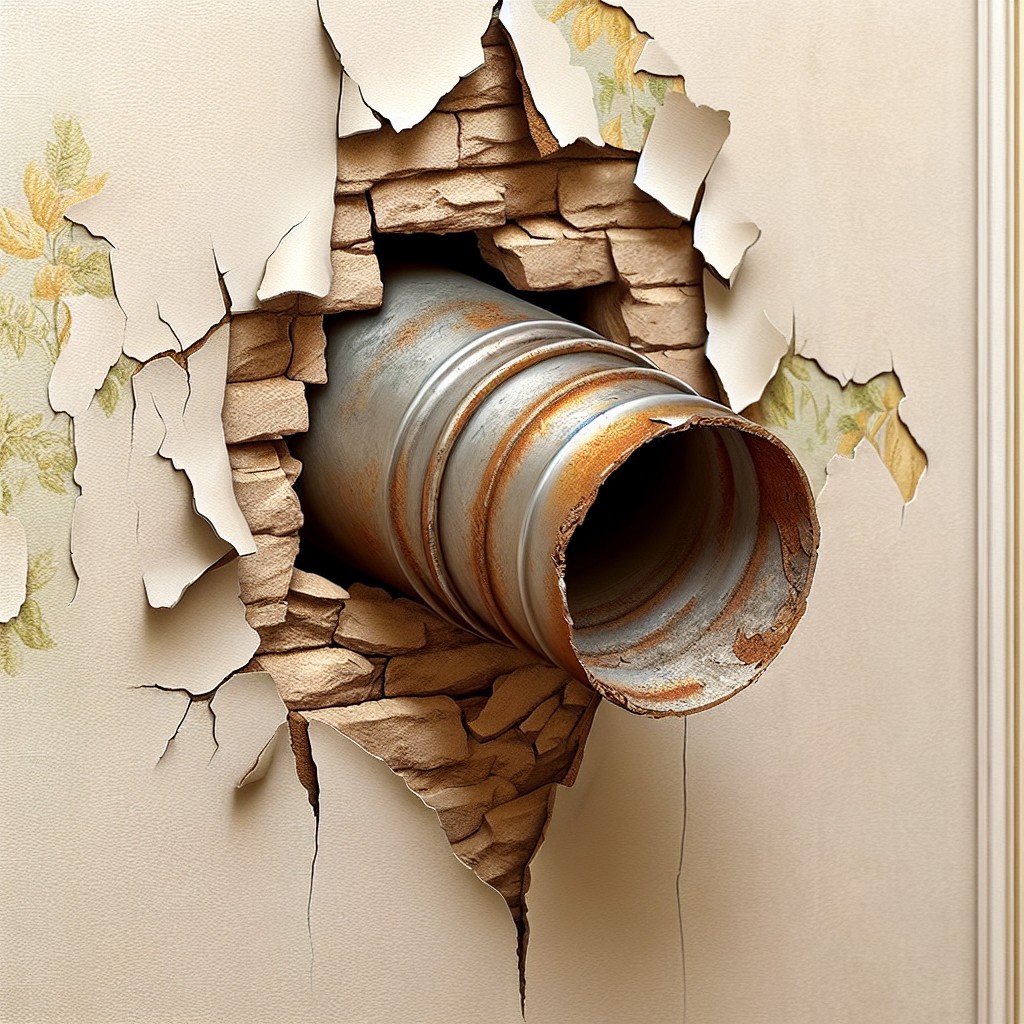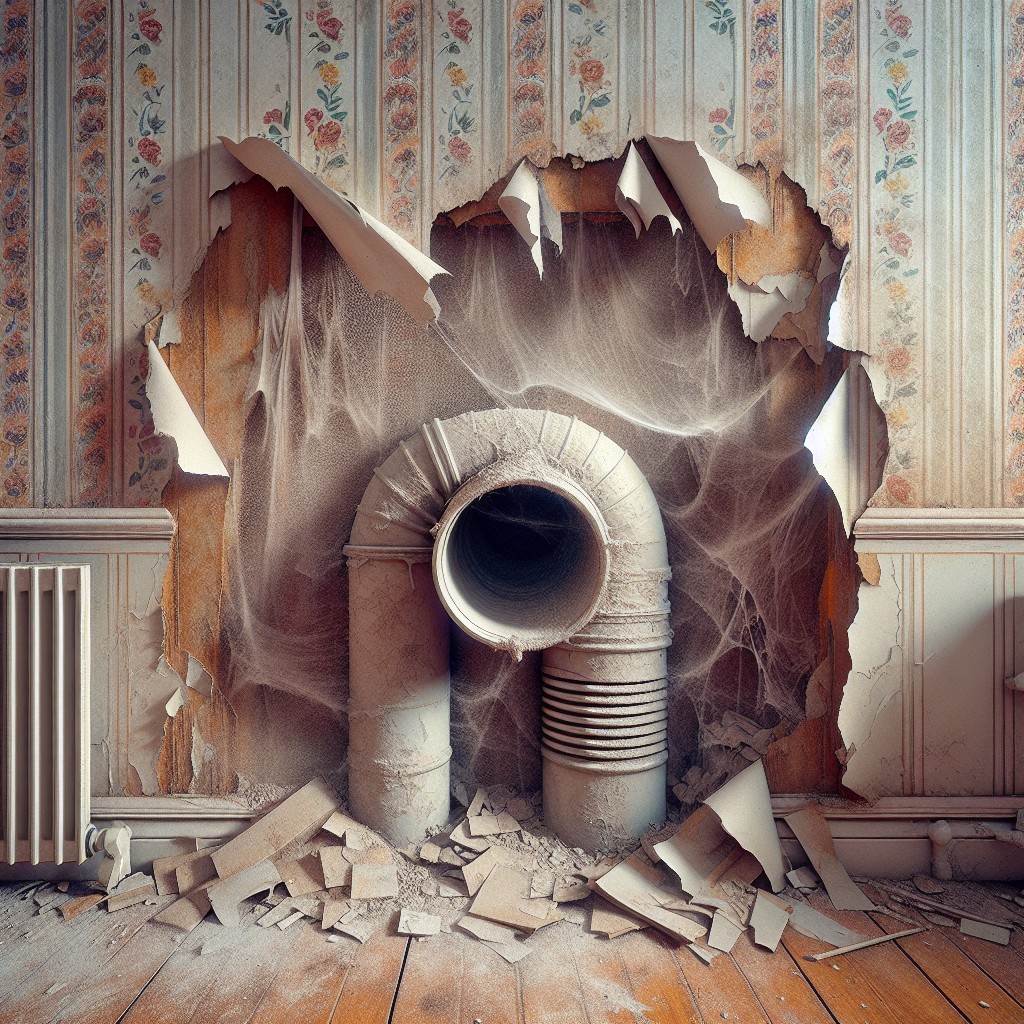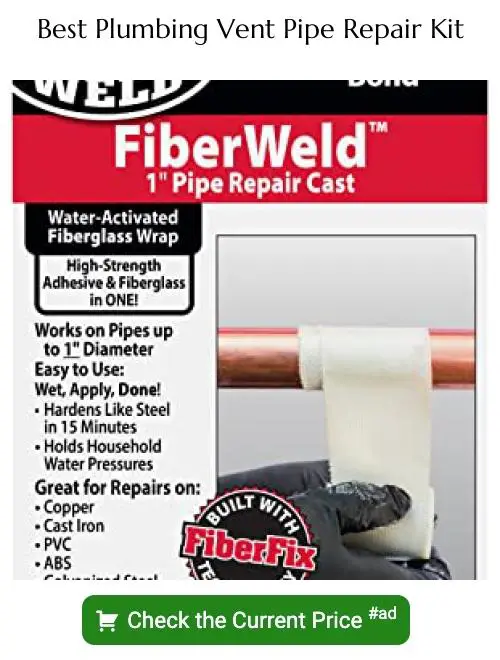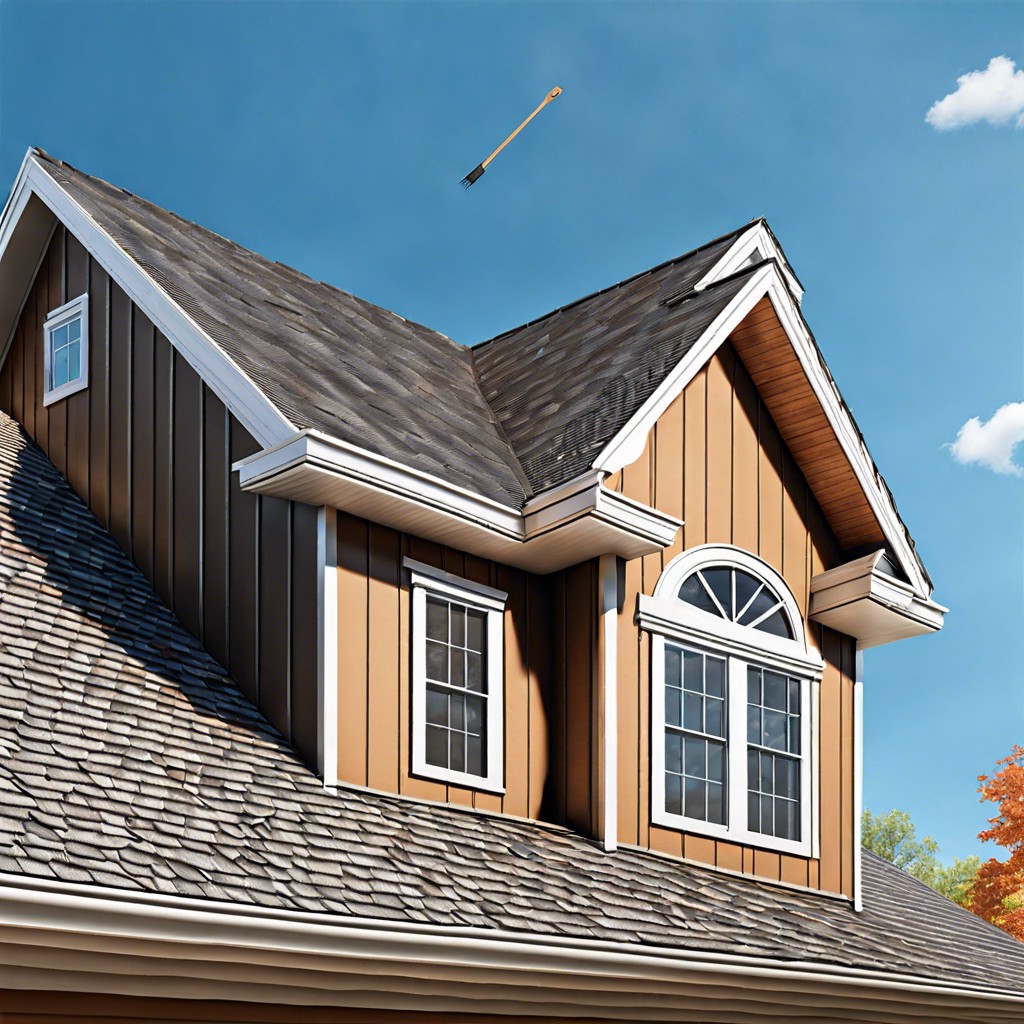Last updated on
Addressing a broken vent pipe in your wall is essential because it directly impacts the ventilation and overall health of your home.
Key takeaways:
- Vent pipes maintain neutral air pressure in plumbing system
- Signs of a broken vent pipe: unusual noises, slow drainage, foul odors, water level fluctuations, sewage backups
- Risks of a broken vent pipe: moisture damage, sewer gas exposure, blocked drainage, pest intrusion
- Steps to diagnose a vent pipe issue: listen for gurgling sounds, check for moisture or stains, smell for sewer odors, inspect vent pipe for obstructions
- Engage professionals for accurate diagnosis and repairs, ensuring safety and warranty compliance.
Understanding the Vent Pipe System

The vent pipe system serves a crucial role in your home’s plumbing by allowing waste gases to safely escape out through the roof. It also permits air to enter the plumbing system, which helps maintain proper atmospheric pressure in the drainpipes to ensure wastewater flows efficiently.
Here are key points that highlight the functionality of the vent pipe system:
- Pressure Regulation: Vent pipes maintain a neutral air pressure in the plumbing system, aiding in the smooth discharge of water and waste.
- Odor Mitigation: These pipes prevent sewer gases from entering the home, channeling them outdoors instead.
- Waste Breakdown: By allowing oxygen into the system, vent pipes contribute to the breakdown of waste within the sewer.
- Preventing Backups: Proper venting helps to avoid traps in the system that can cause water lock or slow drainage.
Understanding how these components operate underscores the importance of promptly addressing any issues, such as a break within the system.
Identifying Signs of a Broken Vent Pipe

Recognizing the signs of a damaged vent pipe can safeguard your home from further issues. Symptoms may include:
- Unusual noises: Gurgling or bubbling sounds from drains can indicate trapped air due to vent obstruction.
- Slow drainage: Basins or toilets that drain slower than usual suggest a blocked vent pipe, which prevents sewer gases from escaping and air from balancing the system.
- Foul odors: A persistent sewer gas smell in your home is a telltale sign, as vent pipes are designed to channel these odors away from living areas.
- Water level fluctuations: If toilets have inconsistent water levels or experience random fluctuations, a compromised vent pipe could be the culprit.
- Sewage backups: Frequent backups could point towards a blocked vent, hindering wastewater flow.
Tackling these issues promptly can prevent more severe complications, ensuring your home remains a healthy environment.
Risks Associated With a Broken Vent Pipe
A compromised vent pipe poses several risks that warrant prompt attention:
- Moisture Damage: Escaping water or condensation can lead to structural damage, mold growth, and deteriorating wall materials.
- Sewer Gas Exposure: Cracks or breaks in a vent pipe can allow harmful sewer gases to seep into your home, posing health risks and creating unpleasant odors.
- Blocked Drainage: A functioning vent pipe maintains proper atmospheric pressure in drain pipes, enabling smooth drainage. A break can result in slow drains or backups.
- Pest Intrusion: Openings in vent pipes can be entry points for rodents or insects, leading to possible infestations.
Addressing a broken vent pipe is essential to protect your home’s structural integrity and ensure the welfare of its occupants.
Steps to Diagnose a Vent Pipe Issue
To pinpoint a vent pipe issue, begin by listening for gurgling sounds after flushing toilets or draining sinks. This may indicate a blockage or break in the pipe.
Examine walls and ceilings for moisture or stains, which can signal a leak within enclosed spaces. Check around the home’s exterior, specifically where vent pipes exit the roof, for signs of damage or blockage.
Smell for sewer odors; a fully functional vent pipe should prevent these odors from entering the home.
If comfortable working on the roof, inspect the vent pipe’s opening for obstructions like nests or debris. For interior examinations, use a flashlight to look up the vent stack for visible signs of a break or obstruction.
If unsure or unable to safely access certain areas, contact a professional for a more thorough diagnosis.
Professional Evaluation and Services
Engaging a professional to assess vent pipe issues ensures accurate diagnosis and appropriate repairs. Specialists come equipped with advanced tools, such as specialized cameras that can journey through the walls to visually inspect the condition of pipes. They can conduct pressure tests to detect leaks or blockages subtly affecting the system.
Licensed plumbers or HVAC technicians should be the ones determining the severity of the damage. They can decipher signs that might go unnoticed by an untrained eye, like slight odors or minimal water damage, and translate these into meaningful insights about the pipe’s integrity. Their experience also allows them to differentiate between a pipe that requires a simple patch-up job and one that mandates a full-scale replacement.
Relying on professionals does more than just resolve the immediate problem. They can spot potential future issues, such as weak joints or corrosion, that could lead to subsequent repairs if not addressed. Additionally, they ensure repairs are up to code, a critical factor that warranty and insurance companies look for in case of a claim.
Professionals also offer guarantees for their work, providing peace of mind knowing that if a similar problem arises shortly after the repair, it will be addressed without extra cost. Such a safeguard is invaluable, especially when dealing with hidden components like vent pipes within walls that are not readily accessible.
To summarize, choosing a professional route means leveraging expertise for a comprehensive solution to vent pipe issues, ultimately saving time, money, and ensuring safety within your home.
DIY Repair Options for Broken Vent Pipes
Before attempting any repair, ensure the work area is safe and wear appropriate protective gear such as gloves and safety glasses.
Begin by identifying the exact location of the break; this may involve cutting into drywall if the vent pipe runs inside a wall. If the break is small, a repair may be as simple as sealing it with a specialized adhesive or using rubber repair tape designed for plumbing applications.
For larger breaks, you may need to remove the damaged section of pipe. Cut out the broken piece with a handsaw, being careful to make clean, straight cuts for a seamless repair. Purchase a replacement PVC or ABS pipe, depending on the existing material, along with appropriate couplings.
Apply PVC or ABS cement to the inside of the couplings and the outside of the pipe ends, then quickly join the sections together, ensuring a tight fit. Hold in place for several seconds to allow the cement to set. It’s crucial to let the repair cure for the recommended time before running water through the system again.
If you have cast iron vent pipes, repair clamps can be a temporary solution until a professional can replace the damaged section. Always follow the manufacturer’s instructions when using repair products to ensure a secure fix.
Consider support brackets for the repaired section if the break was caused by mechanical stress. Regularly check the repair to confirm it holds and be prepared to call a professional if further issues arise. Remember, improper repairs can lead to more severe damage or safety hazards, so exercise caution and know when to seek professional help.
Preventive Measures to Avoid Future Vent Pipe Damage
Regular inspections are key to mitigating vent pipe damage. Ideally, a professional roofer should review your roof’s vent pipes annually, particularly after severe weather events.
Ensure the sealant around vent pipes is intact to prevent water infiltration. Replace cracked or peeling sealant promptly to maintain a watertight barrier.
Installing protective sleeves or boots can shield vent pipes from weather-related wear. High-quality rubber boots are particularly effective in extending the life of your vent piping.
Maintain clearances around the vent pipes. This involves trimming any overhanging tree branches that could potentially fall and cause damage.
Monitor for signs of animal activity. Small creatures can chew or dislodge vent pipe components. Install guards if necessary to deter nesting or invasive behavior.
Lastly, educate yourself on the typical lifespan of your vent pipes. Materials degrade over time; knowing when they’re due for replacement can prevent unexpected failures.
Legal and Safety Implications of a Broken Vent Pipe
A cracked vent pipe not only hampers the functionality of your plumbing system but also carries legal and safety concerns that homeowners should promptly address:
- Building Codes Compliance: Homes must adhere to building codes that stipulate the proper installation and maintenance of plumbing systems. A broken vent pipe could signify non-compliance, potentially leading to fines and mandatory remediation.
- Risk of Toxic Fumes: Vent pipes expel sewage gases to the outside. If damaged, these pipes may leak harmful gases, like methane, into your home, creating health risks for inhabitants.
- Fire Hazards: The accumulation of flammable gases due to a malfunctioning vent pipe can increase the risk of fire, especially if they come into contact with sources of ignition.
- Water Damage: A concealed broken vent can lead to moisture accumulation within walls, fostering mold growth and weakening structural integrity over time.
- Insurance Coverage Issues: Failing to fix a known issue like a broken vent pipe could result in insurance claims being denied if the damage leads to greater property loss.
Addressing a broken vent pipe swiftly ensures the safety of occupants and compliance with the law, while also safeguarding your investment in your property.
FAQ
What happens when vent pipe is cracked?
When a vent pipe is damaged or cracked, it can lead to leaks, therefore enabling water or sewer gases to escape, which necessitates either repair or replacement.
How do you know if your vent pipe is leaking?
You can identify a leaking vent pipe by looking for small water stains on your ceiling or signs of water leaking into your home, often originating from the attic.
Can a plumbing vent terminate through wall?
A plumbing vent cannot terminate through a wall; it must terminate at a point no less than 10 feet from a lot line and at least 10 feet above average ground level, and should not terminate under a structure’s overhang with soffit vents.
What are the common causes of vent pipe cracks?
Common causes of vent pipe cracks include weathering, aging, pests, mechanical damage, and insufficient maintenance.
What are the potential risks associated with a leaking vent pipe?
The potential risks associated with a leaking vent pipe include water damage, mold growth, structural decay, and health problems due to poor air quality.
How are repairs conducted on a cracked vent pipe within a wall?
Repairs on a cracked vent pipe within a wall are conducted by cutting through the wall to access the pipe, replacing the damaged section with an exactly matching piece, and then sealing the joint securely before repairing the wall.





